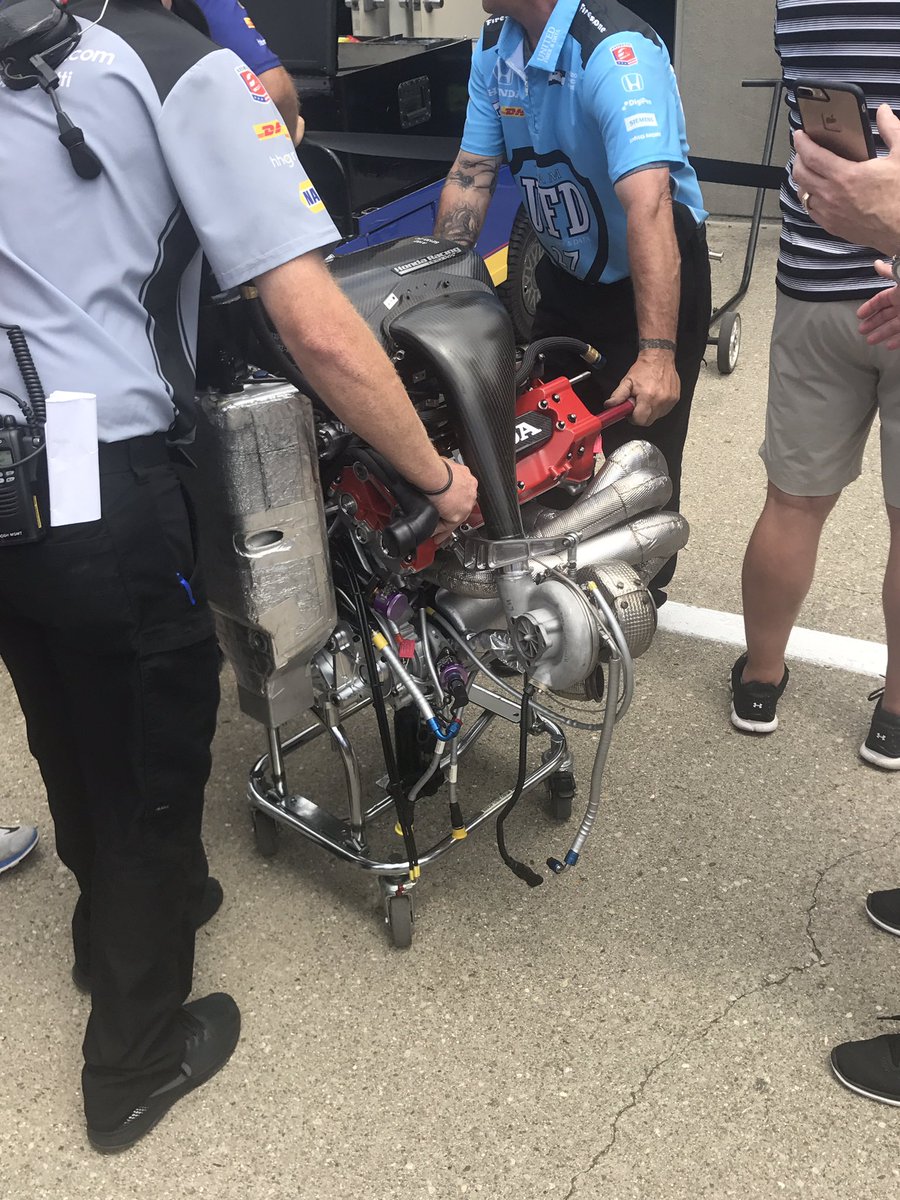n4rf wrote: ↑21 May 2017, 18:56
Raising my hand. Been involved part-time in R&D as a student since 2010, full-time in scientific research since 2015 doing my PhD .
I'm not particularly involved in the design part per se, but in the thermodynamic testing, combustion concepts and specifically in calibration and function development. However, feedback to the design usually comes from thermodynamic testing, so there's that.
I have no idea how you arive at the conclusion of your first sentence. As mentioned by others, it is general knowledge in engine development, that pre-ignition is a common issue in highly boosted, high bmep gasoline DI engines.
Knocking is also an issue, I didn't mean to say that it isn't. It's just, that knocking is really well understood and, to a certain degree, easy to cope with. Obviously, dealing with knocking usually is detrimental to the thermal efficiency of the engine, so there's that. There's also always different categories of "knock limit". The one most people that have been at an engine test bench will know is the safe limit. Depending on the manufacturer they define some limit that, in their experience, will ensure that there's no longterm problems with mechanical defects or unsatisfactory NVH behaviour in the vehicle. Then there's the thermodynamic limit. This is usually quite a lot higher and much more dangerous to test, because it usually is only a small distance from causing broken parts. The thermodynamic limit is defined by the point, where allowing increased knocking doesn't yield any benefits anymore. Basically, it is running into combustion instabilities to an extent, where the better center of combustion (MFB50) doesn't is counteracted by these instabilities.
In general, knocking is less of a problem with increased engine speed. But all of the "in general" has to be viewed as exactly that. Engine specific problems can be surprisingly simple and yet at the same time difficult to overcome.
On the other hand we have pre-ignition. This can easily destroy an engine within one combustion cycle, though that's not the usual situation. But the really worrying part is, that it can often not really be controlled. At least not from one cycle to the next, like knocking with retarding the spark. Since the F1 teams run with pressure transducers in the cylinders, at least they should be able to react to pre-ignition events, because they actually see them. In road cars it's usually not possible for the ECU to detect them.
Regarding the pre-chamber spark plug. The main difficulty is the injector design, specifically the spray target. I do not know, what exactly the teams are doing. But research engines with pre-chamber spark plugs have been operated successfully with conventional injectors with injection during the suction stroke and homogeneous charge operation. I remember a dissertation from RWTH Aachen from somewhere around 2008 (I think), where this was tested extensively. One of the results was, that a scavenged pre-chamber will work much better, but that's not allowed under current F1 regulations. However, the focus was not necessarily maximum thermal efficiency.
An influx of fuel/air mixture into the pre-chamber from the main combustion chamber has to happen during the combustion stroke, because there is a pressure difference between the pre-chamber and the main-chamber (due to the compression). I don't know, however, if that can be sufficient for achieving desirable lambda values in the pre-chamber for the whole operating range.
I actually like the idea of an injector that sits sort of in-between the two chambers. If that is mechanically feasible is another question. Maybe one single injector spray aimed directly towards a whole in the pre-chamber could also work. It is certainly possible to design an injector in that fashion.
What I do know from reliable sources is, that the teams are running homogeneous lean charge in the main combustion chamber. The same sources also tell me, that there's no real "super-lean" stuff going on, certainly nothing above 2.0, usually some way below that. Also makes sense, when you remember that the fuel mass is fixed. That means, that increasing the air/fuel ratio leads to an increased boost pressure demand. So you need to balance the thermodynamic benefits in the cylinder (if there are any left above lambda 1.5-ish) against the losses due to higher compression work. That then also depends on your choice of turbocharger and your MGU-H strategy.
As ever with these engines, after thinking about it for more than 15 Minutes, you arrive at the simple conclusion, that it is much more difficult to get the best design, than you would initially think.
That's enough rambling for today, I think






